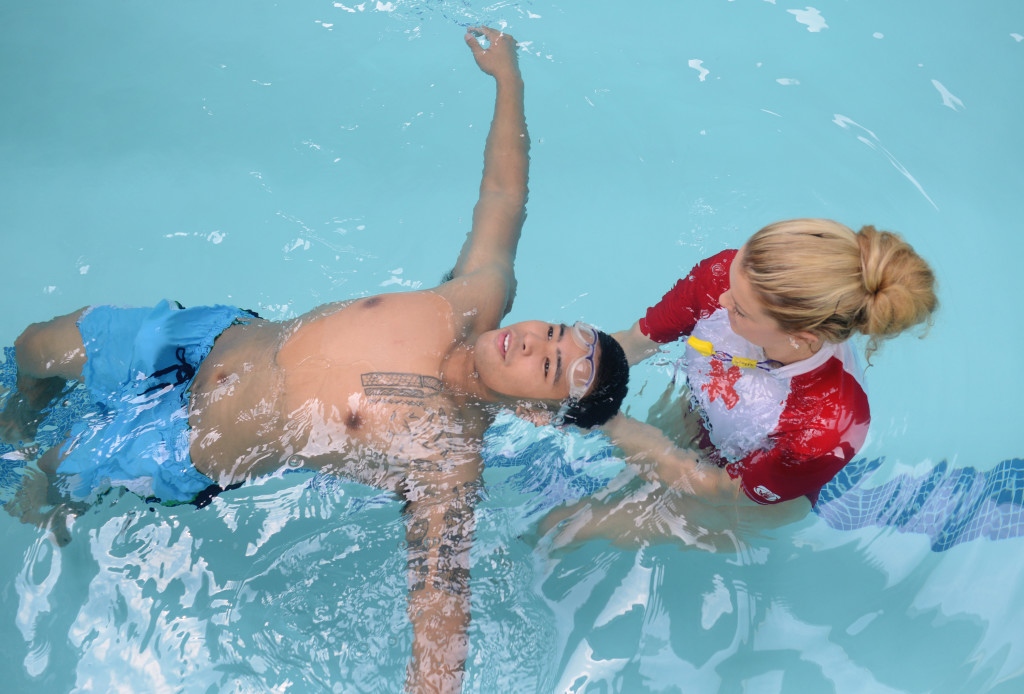To identify one type of swim instruction as best is not always possible. For examples, there are several styles to teach floating and each have their own benefits. Children who are enrolled for swimming sessions are there to be trained in the basics. They are taught to enter the water safely and become comfortable floating while learning the tactics of breathing and propelling on their own in a certain direction. As the child gains confidence, new skills are introduced depending on their capabilities, such as swimming underwater, getting to the bottom of the pool to retrieve objects, diving and many other advanced swim skills.
Types of Swimming:
There are a number of strokes and each one of them strengthens a certain set of muscles and helps to build a strong physique. Here are some of the most popular strokes which your child will learn at Aqua Tots Swim Schools Katy.
- Freestyle Stroke – This is one of the most popular strokes and preferred by most of the swimmers who want to cut through the water fast. This is generally the first stroke taught to new swimmers once they have mastered floating. The young swimmers in our progam learn to paddle hard and at the same time move their arms over the head then bring them back into the water to complete the stroke while kicking at a steady pace. Learning the breathing technique in keeping with the rhythm of the stroke is crucial in mastering this style. The body should be straight to move fast through the water.
- Backstroke – This stroke is the opposite of the freestyle whith the swimmer floating on their back, keeping rest of the body beneath the water. The arms move over the over the head from front to back in a circular motion hitting the water with cupped hands pullinging the water beneath to propel through it. The breathing technique is normal but can still be tricky because there is chance of water getting into the nose when swimmers don’t use proper technique. Backstroke is a more relaxed swim stroke that your children will learn in the initial phase.
- Butterfly Stroke – The butterfly stroke mimics the body motion is of a dolphin stroke while swimmers bring both the arms together over the head and push them through the water to propel towards the end of the pool. The legs, however, will remain straight and together, kicking through the water in a dolphin like fashion. Butterfly is difficult stroke and children are usually taught this advanced stroke in the higher levels because keeping a rhythm under the water and above takes a lot of training and practice.
- Breaststroke – Compared to the butterfly stroke, this stroke is simpler to teach younger children early on. The leg motions of this stroke look more like a frog with the knees bent up close to the swimmers body thrusting out as the swimmer pushes their hands straight forward. As soon as the legs and arms are extended, swimmers pull the legs back up and the hands around and back to the beginning positions. It is essential to keep the body straight to move fast through the water. The rhythm of this stroke is much easier to master than that of the butterfly. Compared to other forms, this is a slow, full body style that covers a large distance in a small span on time.
Other Techniques
In addition to these common stroke, other techniques are taught in the school-based swimming lessons for young children. Some techniques enhance the floating abilities by reducing the excessive use of energy. Because so many children, and adults, lose their lives by drowning, teaching strong floating skills is imperative to overall water safety.
Children have a high aptitude for learning swim skills and they can generally master all levels and techniques within 24 months of continuous lessons. Most will even move on to more advanced skills within that 24 month period. With the confidence they’ll gain, they will be ready for any water environment: pool, lake, rivers and ponds. However, no matter how skilled our swimmers are, adults should always supervise children while they are in the water.
